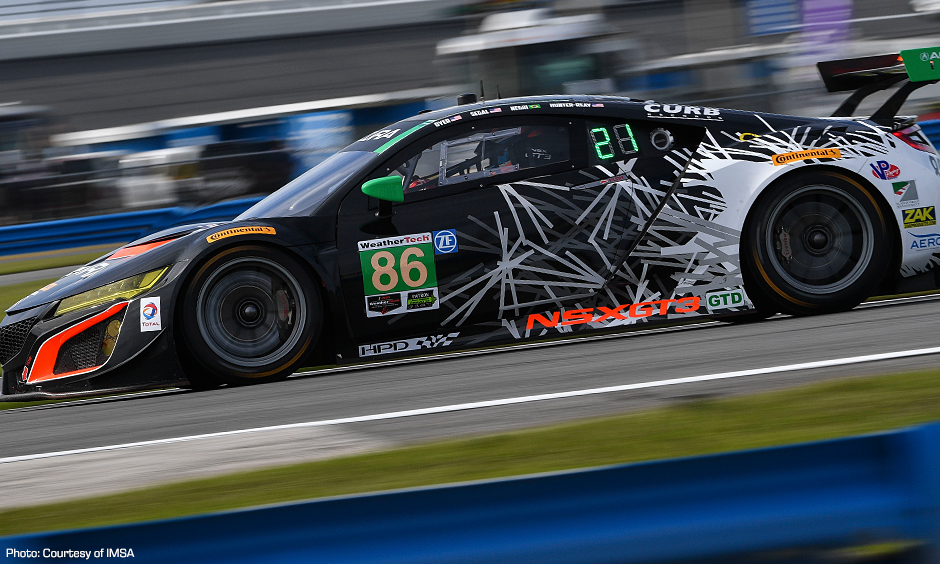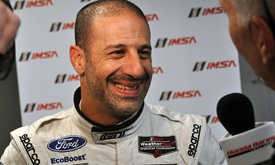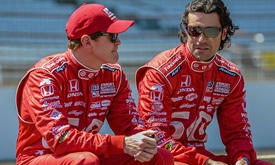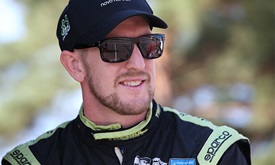Hunter-Reay learning to adapt to Acura NSX for Rolex 24
JAN 28, 2017
DAYTONA BEACH, Fla. – Sometimes, going slower can be faster, and vice-versa.
That’s what Ryan Hunter-Reay, Graham Rahal and Katherine Legge have discovered in their preparation to reintroduce the Acura NSX to sports car racing. When it comes to comparing their experiences in INDYCAR with the NSX, there’s little common ground.
“They’re polar opposites,” Hunter-Reay said Friday as Michael Shank Racing prepared for today’s start of the 55th running of the Rolex 24 At Daytona. “Everything that I get from the Indy car – the faster you go, the harder you push it, the more downforce you get, the better lap time you get – is different from the Acura. With this car, you can only push it so far. Because of the parameters with which it’s built – a certain weight and certain tire – you can only get so much out of it.”
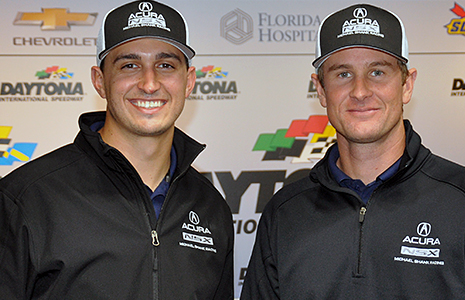 Many familiar faces from Honda’s Indy car program are involved in the NSX project, including Allen Miller, race team principal at Honda Performance Development. Like the production NSX, the race car is produced in Marysville, Ohio.
Many familiar faces from Honda’s Indy car program are involved in the NSX project, including Allen Miller, race team principal at Honda Performance Development. Like the production NSX, the race car is produced in Marysville, Ohio.
“It’s an extremely complicated process,” Miller said. “We’ve taken a production car and stripped it and gutted it and tried to turn it into a race car.”
The NSX production car debuted in 1990 and quickly found success in sports car racing. But Acura, Honda’s luxury nameplate, discontinued the racing program after the 2009 season. Plans to resurrect the racing program emerged shortly after the new generation of the NSX production car was unveiled last year. The Rolex 24 – featuring 24 hours of continuous racing around the 3.56-mile Daytona International Speedway road course – will be its first race.
Although they look similar, the street version of the NSX GT3 and the race car are quite different. The production car features an all-wheel-drive hybrid drivetrain. The race car is rear-wheel drive and powered by a twin-turbocharged V-6.
“It’s been a pretty massive undertaking,” said Hunter-Reay (shown with fellow Verizon IndyCar Series regular Rahal (left) in photo at right). “The team has done a lot in a short amount of time, as has HPD. They have a long development road and this is the first step. It’s a big part of the Honda family and you can tell by the effort being put forth.”
The No. 93 NSX – shared by Legge (who has 39 career Indy car starts), Andy Lally, Mark Wilkins and Rahal (stepping away from his fulltime job driving the No. 15 Rahal Letterman Lanigan Racing Honda in the Verizon IndyCar Series for this race – will start seventh in the GT Daytona class and 34th overall when the green flag waves at 2:30 p.m. ET today. The sister entry -- the No. 86 shared by Jeff Segal, Ozz Negri Jr., Tom Dyer and Hunter-Reay (whose normal racing home is the No, 28 DHL Honda for Andretti Autosport) – will start just behind it, ninth in the GTD class and 36th overall.
For Hunter-Reay, adjusting to an anti-lock braking system will be among his biggest challenges.
“There’s a certain driving style with these cars,” the 2012 Verizon IndyCar Series champion and 2014 Indianapolis 500 winner said. “In this class, ABS is involved, which is completely alien to me. It’s something I’m still trying to wrap my head around. I’m just trying my best not to overdrive the car. I’m wringing the car’s neck, but I’ve discovered that if I back off a little bit, it goes quicker.”










